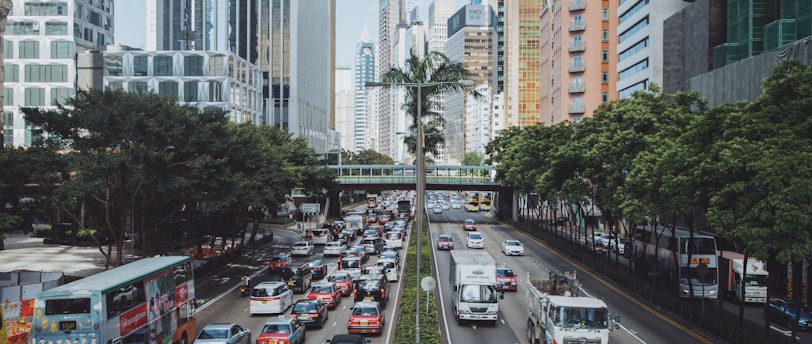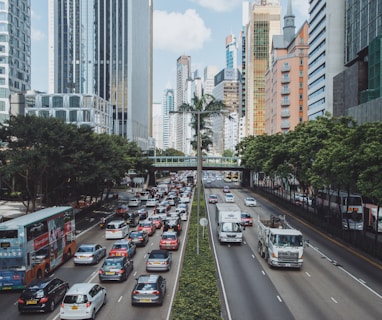Sustainable Transportation: Everything You Need to Know
Sustainable transportation is the practice of moving people and goods in a way that minimizes environmental impact. This blog post provides a comprehensive guide to sustainable transportation, covering everything from the basics to the latest research and technologies.
8/22/20234 min read


Introduction
Transportation is a major contributor to climate change and air pollution. In fact, the transportation sector is responsible for about 29% of global greenhouse gas emissions.
There are many reasons why it is important to make our transportation more sustainable. First, it can help to reduce greenhouse gas emissions and combat climate change. Second, it can help to improve air quality and reduce respiratory problems. Third, it can help to reduce noise pollution and improve our quality of life.
There are many things we can do to make our transportation more sustainable. Here are some of the most important:
Choose a fuel-efficient vehicle: When you are buying a new car, choose a fuel-efficient model. This will help you to reduce your fuel consumption and emissions.
Carpool or take public transportation: If you can, carpool or take public transportation instead of driving alone. This will help to reduce the number of cars on the road and the amount of pollution they produce.
Walk or bike: If possible, walk or bike instead of driving. This is a great way to get exercise and reduce your carbon footprint.
Use ride-hailing services: Ride-hailing services can be a more sustainable option than driving alone, especially if you are only going a short distance.
Support sustainable transportation initiatives: There are many organizations working to promote sustainable transportation. You can support their efforts by donating money or volunteering your time.
In addition to these individual actions, there are also a number of policy changes that can be made to promote sustainable transportation. These include:
Investing in public transportation
Building more bike lanes and pedestrian paths
Creating congestion pricing zones
Raising fuel taxes
Offering tax incentives for electric vehicles
By making these changes, we can all help to make our transportation more sustainable and protect our environment for future generations.
Green Goods Guide
In addition to following the tips above, we can also help to make our transportation more sustainable by choosing green goods. Green goods are products that are designed to reduce environmental impact. Here are a few examples of green goods for transportation:
Electric vehicles: Electric vehicles produce zero emissions, making them a great option for reducing air pollution.
Hybrid vehicles: Hybrid vehicles combine a gasoline engine with an electric motor, which can help to improve fuel efficiency.
Fuel-efficient tires: Fuel-efficient tires can help to improve your car's fuel economy.
Public transportation passes: Public transportation passes can help you to save money and reduce your carbon footprint.
Reusable bags: Reusable bags can help to reduce the number of plastic bags that are used.
Biodiesel: Biodiesel is a renewable fuel made from vegetable oils or animal fats. It can be used in diesel engines, and it produces fewer emissions than traditional diesel fuel.
E-scooters: E-scooters are a new form of transportation that is becoming increasingly popular. They are electric, so they produce zero emissions.
By choosing green goods, we can all help to make our transportation more sustainable.
Here are some statistics and data from India and around the world regarding sustainable transportation:
India
The transportation sector is responsible for about 14% of India's greenhouse gas emissions.
The number of vehicles in India is expected to double by 2030.
The government of India has set a target of reducing the carbon intensity of the transportation sector by 35% by 2030.
Some of the initiatives that the government of India is taking to promote sustainable transportation include:
Investing in public transportation
Building more bike lanes and pedestrian paths
Promoting the use of electric vehicles
Raising fuel taxes
Worldwide
The transportation sector is responsible for about 29% of global greenhouse gas emissions.
The number of vehicles in the world is expected to increase by 1.2 billion by 2030.
The international community has set a target of reducing global greenhouse gas emissions by 45% by 2030.
Some of the initiatives that are being taken around the world to promote sustainable transportation include:
Investing in public transportation
Building more bike lanes and pedestrian paths
Promoting the use of electric vehicles
Raising fuel taxes
Developing new technologies, such as self-driving cars and hyperloop
Here are some specific examples of sustainable transportation practices from India and around the world:
India
The city of Pune has implemented a bus rapid transit system that has helped to reduce traffic congestion and air pollution.
The state of Kerala has been a pioneer in the use of electric vehicles. The state government has provided subsidies for electric vehicles, and there are now over 10,000 electric vehicles registered in the state.
The city of Delhi has implemented a congestion pricing scheme that charges drivers a fee to enter the city center during peak hours. This has helped to reduce traffic congestion and air pollution.
Around the world
The city of Oslo, Norway, is aiming to become the world's first car-free capital city. The city has already banned cars from the city center, and it is investing in public transportation and cycling infrastructure.
The city of Paris has implemented a number of measures to reduce traffic congestion and air pollution, including a congestion pricing scheme, a bike-sharing program, and a car-free day.
The country of Denmark has one of the highest rates of cycling in the world. The government has invested in cycling infrastructure, and there are now over 12,000 kilometers of bike lanes in the country.
These are just a few examples of the many sustainable transportation practices that are being implemented around the world. By working together, we can make our transportation more sustainable and protect our environment for future generations.
Keywords:
sustainable transportation
green transportation
fuel-efficient vehicles
electric vehicles
hybrid vehicles
public transportation
reusable bags
biodiesel
e-scooters
We hope this blog post has helped you learn more about sustainable transportation and how you can help.
